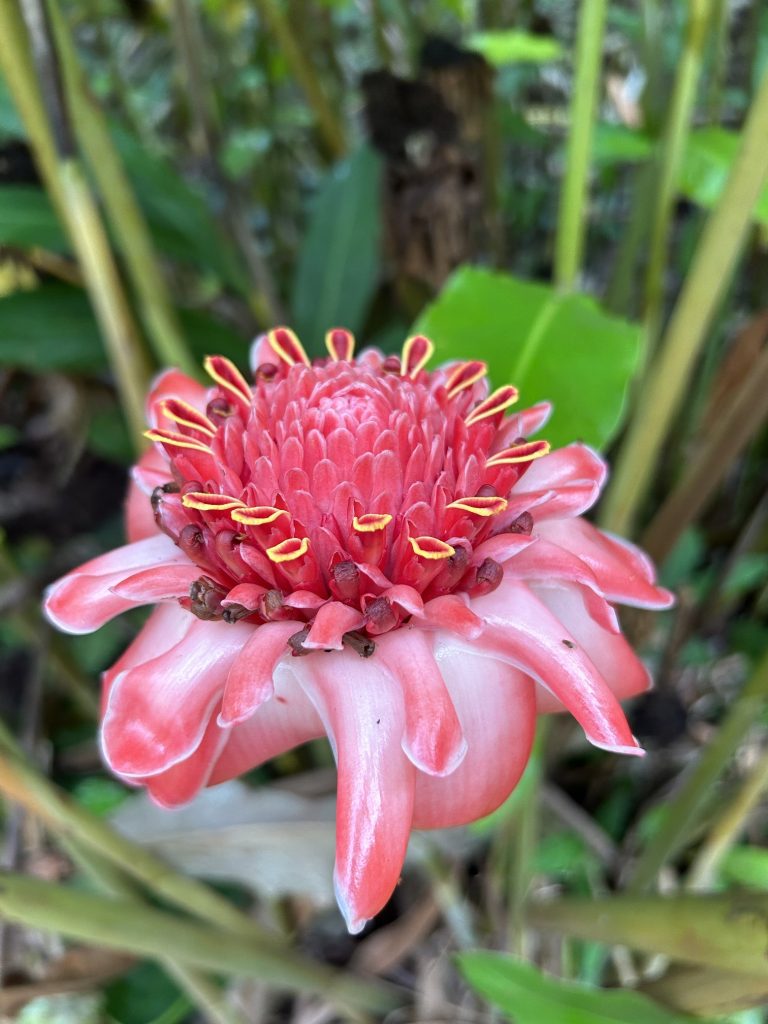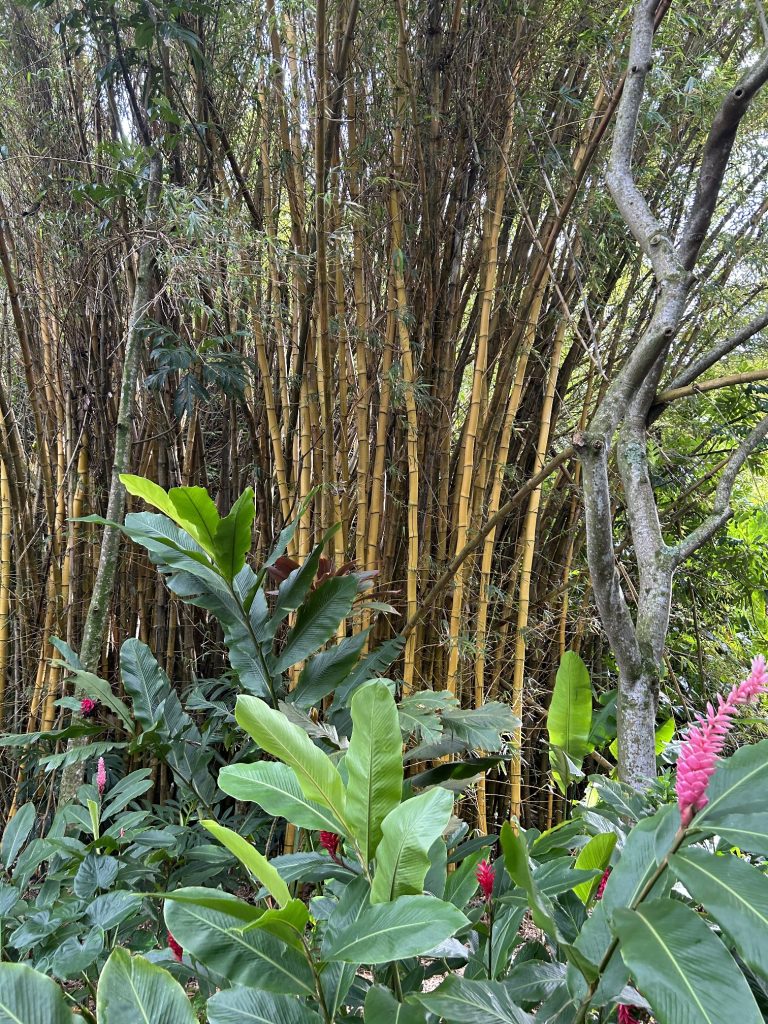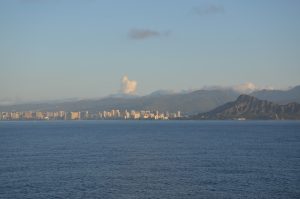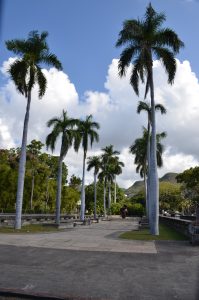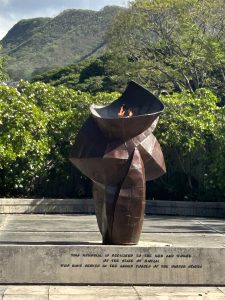Today marks the 8th day of our 55 days of world exploration. Since leaving home on January 17, 2023, we have already played in Los Angeles and on the island of Oahu, Hawaii. Alan and I would begin the day early again, so we started the morning with a breakfast on our balcony. The sunrise was beautiful as we arrived in our second port of Hawaii, the island of Kauai. We were Malahini, or newcomers to these lands and we were once again refreshed and ready to explore.

Kauai is a small island at just 33 miles wide by 55 miles long. There is only a single road which only accesses about 1/3 of the small island. After much studying I had learned that the best ways to view this island was by boat or plane, so I had booked tours for us to do both. Our first stop would be the Fern Grotto.
A grotto is a cave which occurs naturally or is man-made. The pictures which I had seen of the Fern Grotto were spectacular and I was very excited to see it. The tour was touted as a visit to a geological wonder of Kauai promising an ampitheater, where ferns grow upside down from the roof of a grotto, which had formed millions of years ago.
There is only one way to get to the Grotto and that is via boat! In fact, The Wailua River is known as “the only navigable river” in all Hawaii, which would make the adventure even more exciting. I felt as if we were discovering hidden places.
There are a couple companies which offer tours on the 22.5 mile long river. We would be traveling with the Smith family for just two of those miles. This family has been navigating the river since 1946. Our boat for the day was called the Whitney K. She was one of several on the river that day.

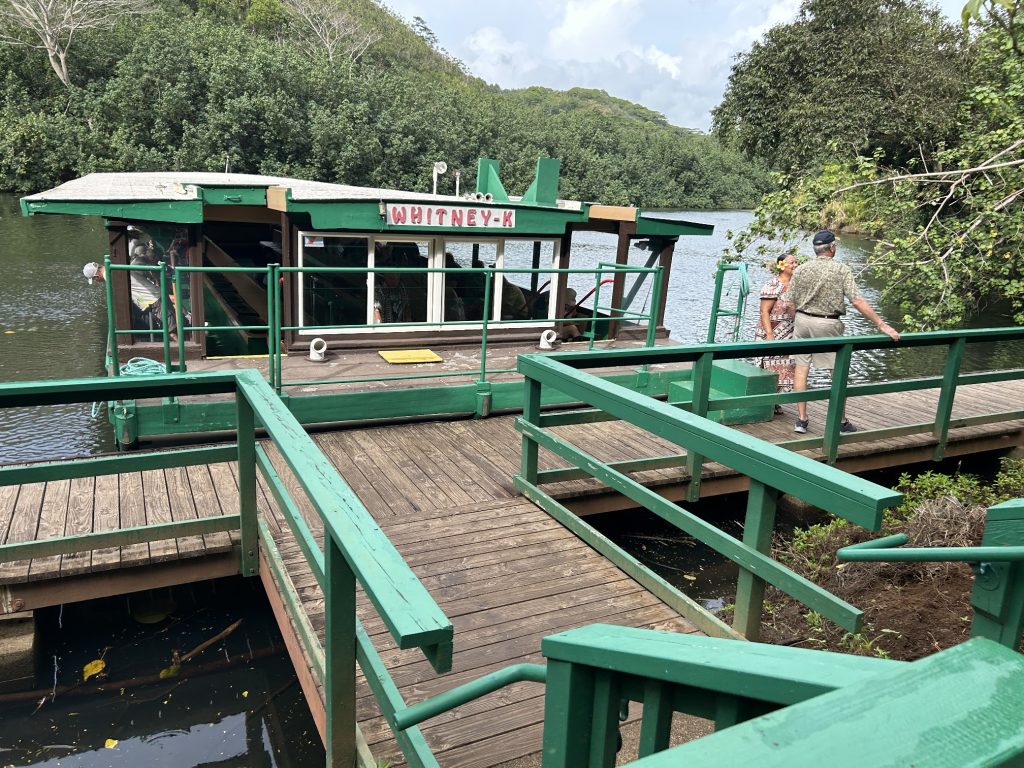
Besides the few boat companies, the only other way to get to the grotto (which is owned by the Smith family) is by kayak. These could be rented or one could take the half hour journey up the river in their own kayak. Except for the rain which was falling off and on, I think we would have preferred this mode of travel.
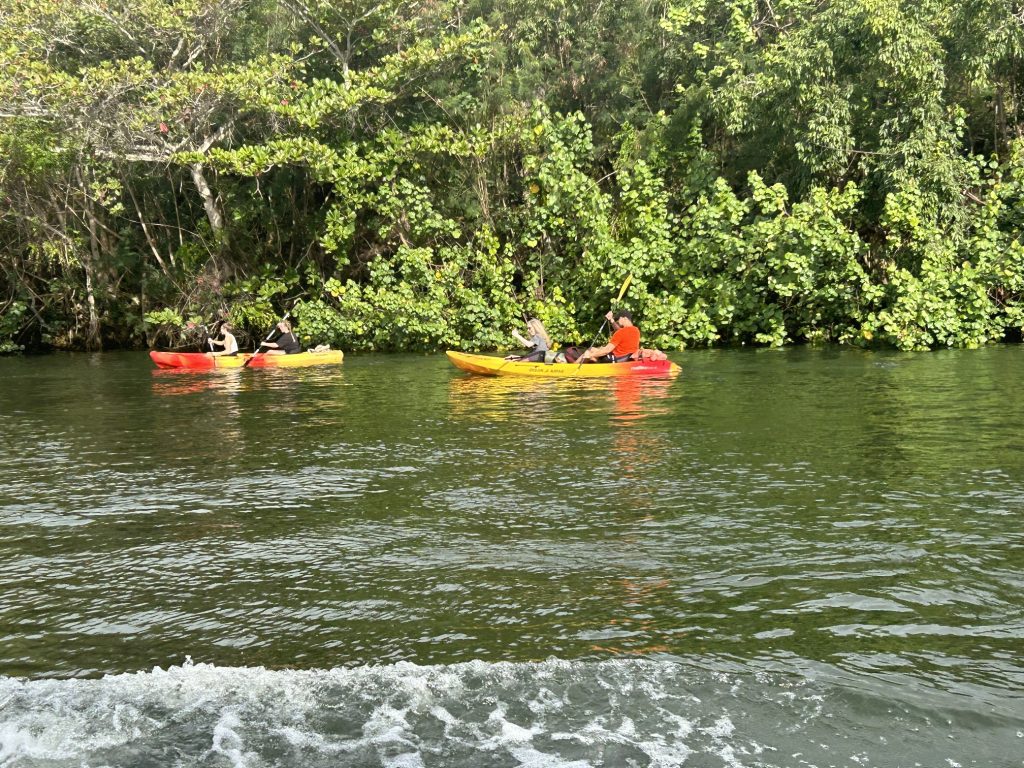
Instead we had chosen what I affectionately refer to as a cruise ship “Granny tour”. These are the kinds of trips which are sedate and slow. perfect for the elderly, which we are not yet quite there. This was a float trip down a winding river, while relaxing, it was boring. Don’t get me wrong, the river is pretty enough but the view doesn’t vary much and powering under our own efforts would have at least given us something to do.
The saving grace to our boredom was that we were treated to a pretty spectacular rainbow, which spread across the river as the sun peaked out for a moment after one of the many showers on this day. It was a short lived reprieve from the gloomy day and we soon found ourselves back in our soggy conditions. Thankfully we could remain under cover on our boat while being regaled with the history of the river, as we made our way to the Fern Grotto.
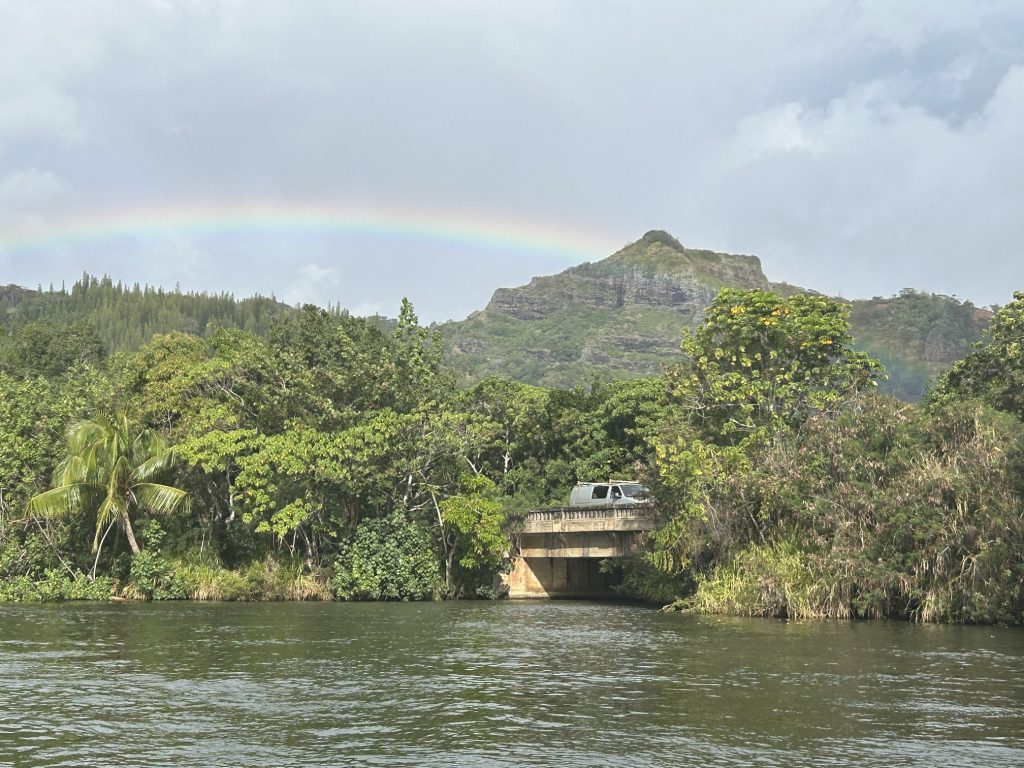
We learned that the water which feeds the river comes from Mt. Wai‘ale‘ale, one of the wettest spots on the planet receiving about 465″ of rain a year! Kauai is the forth oldest of the Hawaiian islands. I was interested to learn that lands along the river were the sacred capital of ancient Kauai and the birthplace of the island’s ali‘i, or royalty.
After about half an hour we reached the dock to disembark for the short walk to the grotto. Normally there would be a performance of The Wedding Song and a hula dancer at the Fern Grotto where they would perform The Wedding Song at the amphitheater, but the rains were preventing it on this day, so the musicians performed on the boat, as we waited out yet another shower.


I had seen spectacular images of the Fern Grotto, so it was disappointing once we finally arrived. There was a lot of greenery but I was very disappointed to realize much of the old grotto had collapsed leaving only a fraction of the original glory. A little creative photography and I was able to capture a piece of the former glory.
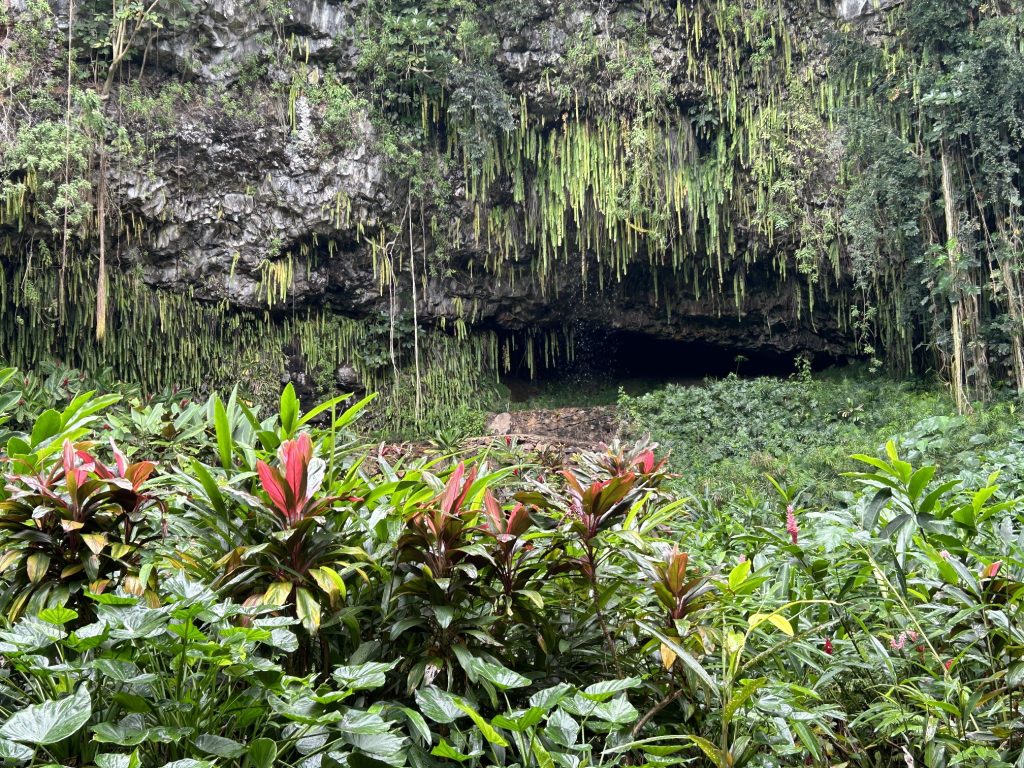
In fact, the decline of the Fern Grotto’s began when it was hit by Hurricane Iwa in 1982. It was then nearly destroyed as Kauai was hit by Hurricane Iniki in 1992. Most of the ferns hanging from the grotto were torn from the rocks, With nothing to hold the ground together, the roof of the spectacular amphitheater began collapsing. In 2006 a woman sued the Smith family after being injured by falling rocks. The grotto is no longer accessible by foot and may only be viewed from a distant wooden platform. Although much of the plant life has rebounded, the grotto has had a difficult time recovering as new plant life has sprung up with increased light which now floods the gully.
All was not lost on this tour. After viewing the gully we were able to return to the boat via a flower lined walking path. My camera clicked from one flower to the other, as I attempted to capture the beauty of the native Hawaiian plants which surrounded us. Walking among the colorful exotic tropical plants sproting from the floor of this rain forest I realize I am in my most perfect element of serene peace. It was in this way that I would come to continue recommending this tour for others to enjoy. Perhaps the float trip had been more fabulous than even I had imagined it could be. Perhaps “Granny trips” are exactly what my soul needs as I learn to relax into this sixth decade of my life.
